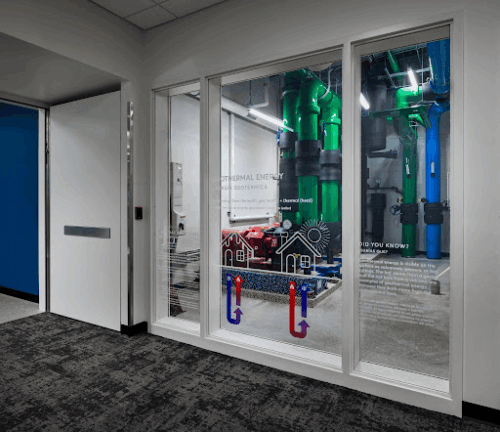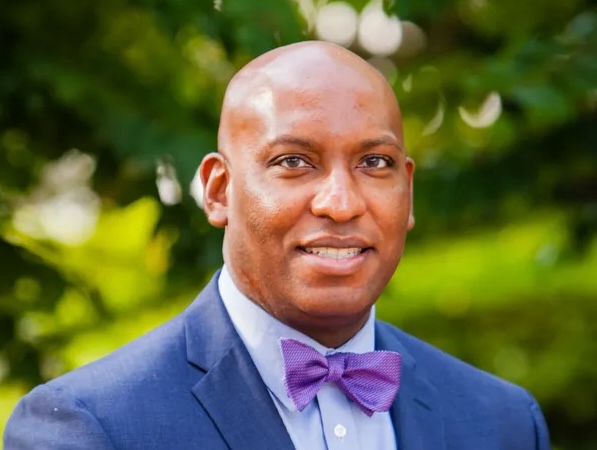- Home
- Blog Posts
- Building for the Future: The Urgency of Strategic School Infrastructure Planning
Building for the Future: The Urgency of Strategic School Infrastructure Planning
Written by National Center on School Infrastructure (NCSI),
Representing diverse public sector voices from across the country, NCSI’s Advisory Committee members bring a wealth of expertise and experience from the field that has helped shape NCSI’s priorities. Over the course of this year, we are featuring Advisory Committee members speaking about insights gained through their work to drive school infrastructure improvements. Here we interviewed William Merritt, Chief of Staff at Jackson Public Schools in Jackson, MS, to hear about why strategic planning matters.
William Merritt IV has been with Jackson Public Schools (JPS) for 22 years. As Chief of Staff, he stands at the intersection of leadership, logistics, and long-term vision for the district. With roughly 18,000 students and over 30 school buildings — many of which are more than 65 years old — Merritt is leading conversations that confront not just aging infrastructure, but also are deeply rooted issues of equity in geography, economics, and race.
“Children in the Mississippi Delta may not have seen new facilities in 60 years,” Merritt says. “We’re talking about schools built before there were HVAC systems.”
That stark reality points to broader structural inequities. Jackson, Mississippi — the capital city — is often cited as the Blackest city per capita in the United States. Over 96% of students in JPS identify as Black or African American, with a poverty rate that surpasses the state average. In this environment, underfunded and outdated school infrastructure isn’t just a facilities issue — it’s an educational crisis.
Aging Buildings, Dwindling Enrollment
Merritt has seen Jackson’s student population decline by 41.3% since 2014. In 2024, the district closed 11 schools and merged two more due to declining enrollment and facility health — a difficult decision, but one grounded in data and necessity.
A third-party study rated the health of JPS facilities, classifying many as “sick” based on factors such as air quality, outdated systems, and environmental hazards including lead and asbestos. In a region where some HVAC systems date back to the 1980s, Merritt argues that ignoring facility health undermines both educational outcomes and student well-being.
“As we look at climate change, HVAC systems have to be a priority. The summers are getting hotter. School start dates are already shifting in some districts because of it.”
And the issue isn’t limited to temperature. Old infrastructure is a barrier to educational quality. While wealthier districts in other states benefit from more robust tax bases—both residential and corporate—Jackson, MS has neither. Merritt points out that Mississippi has no Fortune 500 company headquartered in the state.
“I was born and raised in Texas. When I got to Mississippi, I realized how different funding is. There should be a national allocation — designated funding — for rebuilding aging school facilities.”
Planning for the Future, Strategically and Transparently
For Merritt, strategic planning isn’t just a buzzword — it’s an imperative. Within the district’s strategic plan, its “Organizational Effectiveness” pillar includes a commitment to upgrading facilities. Still, the realities are sobering: despite spending over $60 million in ESSER funds for HVAC upgrades, each system can cost $6–8 million per building. The math doesn’t work without bigger support — and a clearer vision.
“A lot of the time, we’re playing whack-a-mole, addressing what pops up that we’re actually able to address in that moment. What we haven’t done — and what we must do — is create a long-term vision for facilities. We need a 10-year outlook grounded in data and student experience.”
He envisions a system where investment is tied to fairness and realism. If a district has six high schools but only 5,000 high school students, it must consider consolidation. Merritt doesn’t shy away from this.
“We want new buildings, yes — but we also must be willing to give something up. We must be fair, strategic, and data-driven.”
Merritt also emphasizes the need for third-party validation to lend credibility to difficult decisions. He sees external assessments and data as vital tools for community conversations — shifting the narrative from one of scarcity and blame to one centered on student needs and experience.
Beyond Facilities: Perception, Politics, and Community Pride
The roadblocks are not just physical but cultural and political. As Merritt notes, being located in the state capital brings increased media scrutiny. Challenges within JPS — real or perceived — are often amplified in public discourse.
But deeper still is the issue of student self-esteem and community pride.
“A large number of our students don’t feel good about their schooling experience. When children live in poverty, we sometimes fail to instill in them that they are assets — that they have something to contribute.”
Programs like the Superintendent’s Youth Advisory Council aim to elevate student voices, but Merritt believes more systemic change is needed. That includes how the community, state, and nation invest in — and talk about — schools like those in Jackson.
Partnerships That Work
Despite the challenges, Merritt points to successful partnerships—with local nonprofits, business and industry groups, and national philanthropy—as examples of what’s possible. Through philanthropic support aligned with the district’s strategic plan, JPS has seen academic gains — including improvement on JPS’s district report card from an F rating to nearly a B.
“The investment was academic, and the results show what happens when partners align with our vision. Investment in the programs and activities that support student success have made a measurable difference.”
He hopes that same alignment — between federal investment, strategic planning, and community engagement — can now be extended to the district’s infrastructure.
A Call for National Attention
In his closing thoughts, Merritt doesn’t mince words: it’s time for the nation to look hard at the disparities in school facilities — especially in historically underfunded districts like Jackson.
“We have the data. We know where the need is. There should be national funding dedicated to school infrastructure — to ensure all children, regardless of geography or race, have facilities that reflect the quality they deserve.”
Because at the end of the day, Merritt isn’t just talking about bricks and HVAC units. He’s talking about educational success — and about giving every student in Jackson the foundation they deserve.




